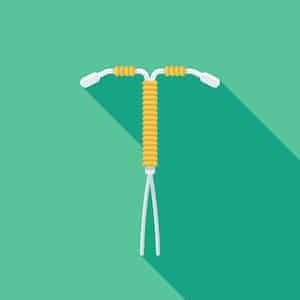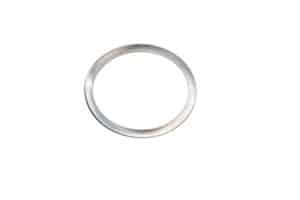Which Birth Control Method Is Right for You? Let’s Evaluate Them All!
Every month, I like to take a new topic and address it every Wednesday. And I realized recently that I had not written about birth control since 2010! Yikes! Especially because it’s such a common question I get when it comes to sex in marriage.
So this month I thought I’d dedicate towards talking about how to choose a birth control method that will work for you.
Now, that’s opening a huge can of worms. I know that there are some reading the blog who think that any form of contraception at all is wrong. (I will be talking about natural family planning quite a bit, by the way!). I understand, and I respect you for that, and if you don’t want to talk about it, it’s okay. Just please understand that there are a lot of women who are very eager to hear some of this information.
My own personal view (which is going to come out this month!), is that God gave us certain physical signs so that we would know when we are fertile, so that we would have the ability to make decisions about family size. And family size is a consideration today in a way that it wasn’t in biblical times or even 150 years ago. Children born today tend to live to adulthood; they don’t die in infancy. And kids aren’t necessary for the family’s economic prosperity in the way they were many years ago when you needed kids to work on the farm. Instead, they’re very expensive (even if you can save money by being smart and thrifty!). Just one simple example: it’s hard to get a vehicle that seats more than 8 people, so once you’ve had 6 kids, you can no longer even travel altogether in one vehicle. Modern life just makes us see family size in a very different way.
At the same time, I don’t think that’s it’s a great idea to mess around with our bodies very much when it comes to our fertility. So I guess I’m one of those people that fits in the middle–I do think it’s okay to try to choose when kids come; but I also think we need to be careful with how we do that.
Today I want to give a broad overview of the main methods of birth control, with their pros and cons, and then later in the month we’ll look in more detail at The Pill, natural family planning, and what to do about contraception as you get ready for your wedding.
But before we do that, we need to remember one basic truth:
When it comes to birth control, you can’t have it all.
You’re going to be balancing the side effects and downsides of any method with the risk of an unplanned pregnancy.
There are different risks to each method of birth control: risks to your long term health; risks of an unplanned pregnancy; and (potentially) risks of accidentally causing a conceived baby to be unable to implant in the uterus, causing a spontaneous abortion.
You cannot have sex without dealing with these risks. If you are choosing to have sex, you also must choose how to balance those risks, and deal with the effects of those choices.
In the absence of a medical reason, if a pregnancy would be truly and deeply devastating to you and your spouse and must be avoided at all costs, do not get married–or at least get sterilized. It’s really that simple. No method is 100% effective (really except sterilization), and so if you’re going to be having sex, you can’t then also view a baby as a tragedy.
That being said, with perfect use, birth control methods nearly all perform extremely well.
Effectiveness at preventing pregnancy with all those listed here is in the 95th percentile or above (except diaphragms, which are 92-94% effective with perfect use, and pulling out, which is about 75% effective with perfect use). A rating of 95% effective means that 5 women among every 100 using the method perfectly for a year will get pregnant at some point during that year. To put this in perspective, among women without known fertility problems who are under 37, 85 out of 100 women will get pregnant within a year of unprotected sex.
Perfect use means that you always use it correctly: you always wake up on time to take your pill, take your temperature, or always use a condom. So when you’re evaluating different birth control methods, you also have to ask yourself, “am I the kind of person who could use this method perfectly?”
What I don’t want to do in writing this series about birth control is to tell you what choices are right for you in your marriage.
Instead, my goal is to give you the information you need to make informed choices. Sex education in Christian families is often really poor (that’s why we created The Whole Story!), and we know too many couples who have had unexpected babies. (This isn’t to say that an unplanned baby is a bad thing, speaking as the wife of an unplanned baby!). Instead, my hope is that a couple will choose whether they want to be open to an unexpected baby or not.
Another important reason to understand the breadth of birth control options is that the method that works for your marriage and family will likely change in different seasons of your life. Knowing what options are available will help you adjust as life’s changes happen.
So let’s jump in!
Birth Control Method
Pros
Cons
The Pill

Allows for skin-on-skin contact
Can have sex any time
Can improve acne problems
Can lessen menstrual cramps and regulate irregular periods
Contains hormones
Can lower libido
Can cause some women to gain weight
Cause cause mood changes
Can interact with other medications
Must be taken at the same time, daily, to be effective
There is often a lag time of several months to a year after stopping The Pill to your body able to become pregnant
Can prevent a fertilized egg from implanting
No protection from STIs
Condoms

You don’t need a prescription to use them
You can stop and try to get pregnant immediately
No artificial hormones
Protects from STIs
Can have sex any time (as long as one’s on hand!)
Makes clean up afterwards much easier
Can change how sex feels without skin-on-skin contact
Has to be used consistently to be effective
IUD (hormonal)

Lasts up to 5 years with no maintenance
Can have sex any time
Periods may become lighter or even stop completely
No increase in time to pregnancy over condoms if you want to get pregnant after using it
Allows for skin-on-skin contact
Contains hormones
Must be medically inserted and removed, which can be uncomfortable
No protection from STIs
Some studies suggest they can prevent a fertilized egg from implanting
When pregnancy does happen using an IUD, it’s much more likely to result in an ectotopic pregnancy.
Side effects can include cramping for multiple weeks after insertion and intermittent spotting for 3 months after it is first inserted. Periods can often be lighter, but inconsistent so there’s no warning for some women.
Natural Family Planning (Sympto-Thermal Method)

Allows you to know your cycle and catch hormonal/fertility problems
No lag time to get pregnant
No artificial hormones
Free (ok, you buy a thermometer…)
Allows for skin-on-skin contact
Must use multiple methods to be effective
Must be very vigilant about charting/ checking fertility signs
Very little room for error
Many times a month where sex is not possible without using additional contraceptives
No protection from STIs
Pulling out

Allows for skin-on-skin contact
No artificial hormones
Can have sex at any time
Free
Not effective (pre-ejaculate can contain sperm)
Not considered a birth control method by OB-GYNs
No protection from STIs
Reduces pleasure, since the man has to catch himself right at the height of orgasm and stop the natural urge
Vaginal Ring

Allows for skin-on-skin contact
Lasts for a month – you don’t need to remember it daily
Can cause lighter periods
Contains hormones
Can’t be used by all women
Can interact with other medications
Some studies suggest it can prevent a fertilized egg from implanting
No protection from STIs
Diaphragm

Allows for skin-on-skin contact
No artificial hormones
No lag time to get pregnant when stopping birth control
Can have sex any time (as long as you insert it first)
Must be inserted correctly to work and can be dislodged during sex
Less effective than other methods (gynecologists told Rebecca it only has a 75% success rate)
No protection from STIs
Sterilization (Vasectomy)

Very effective with no maintenance
More fun than a condom
Can have sex any time
Can be irreversible
Painful and vulnerable procedure for the person getting sterilized
No protection from STIs
There you go–the main forms of birth control, with their pros and cons.
I’m not going to comment much more than that today, because that’s already a lot of information! As the month goes on, we’ll talk more about some of these methods.
But let’s get the conversation started. Is there a method you LOVE? Is there a method you HATE? Let’s talk in the comments!
Author
Social Media
Sheila's Best Posts
Books
Courses
Freebie
 Sheila Wray Gregoire has been married for 26 years and happily married for 21! She loves traveling around North America with her hubby in their RV, giving her signature "Girl Talk" about sex and marriage. And she's written 8 books. About sex and marriage. See a theme here? Plus she knits. Even in line at the grocery store.
Sheila Wray Gregoire has been married for 26 years and happily married for 21! She loves traveling around North America with her hubby in their RV, giving her signature "Girl Talk" about sex and marriage. And she's written 8 books. About sex and marriage. See a theme here? Plus she knits. Even in line at the grocery store.
 Find Sheila Here:
Find Sheila Here:
Facebook
Twitter
Instagram
YouTube
Pinterest
Sheila's Favorite Posts on To Love, Honor and Vacuum:
10 ways to initiate sex
10 Effects of Porn on Your Brain, Marriage, & Sex Life
Why So Much Marriage Advice is So Trite
How can Sex be Hot and Holy at the Same Time?
Check out some of Sheila's Books:
The Good Girl's Guide to Great Sex
31 Days to Great Sex
9 Thoughts That Can Change Your Marriage
To Love, Honor, and Vacuum
Check out Sheila's Courses:
The Boost Your Libido Course
The Whole Story: Talking to Your Daughter about Sex, Puberty, and Growing Up
The FREE Emotional Intimacy E-Course
Are you ready to take your marriage to the next level?
Sign up for our emails and get access to the TLHV free marriage and parenting resource library. We have over 25 downloads and are constantly adding more. Sign up here!
Does Your Sex Life Need a Pick-Me-Up? Maybe it's gotten stale. Maybe it's never felt that great. Or maybe you just feel like you're missing something!
Maybe it's gotten stale. Maybe it's never felt that great. Or maybe you just feel like you're missing something!



